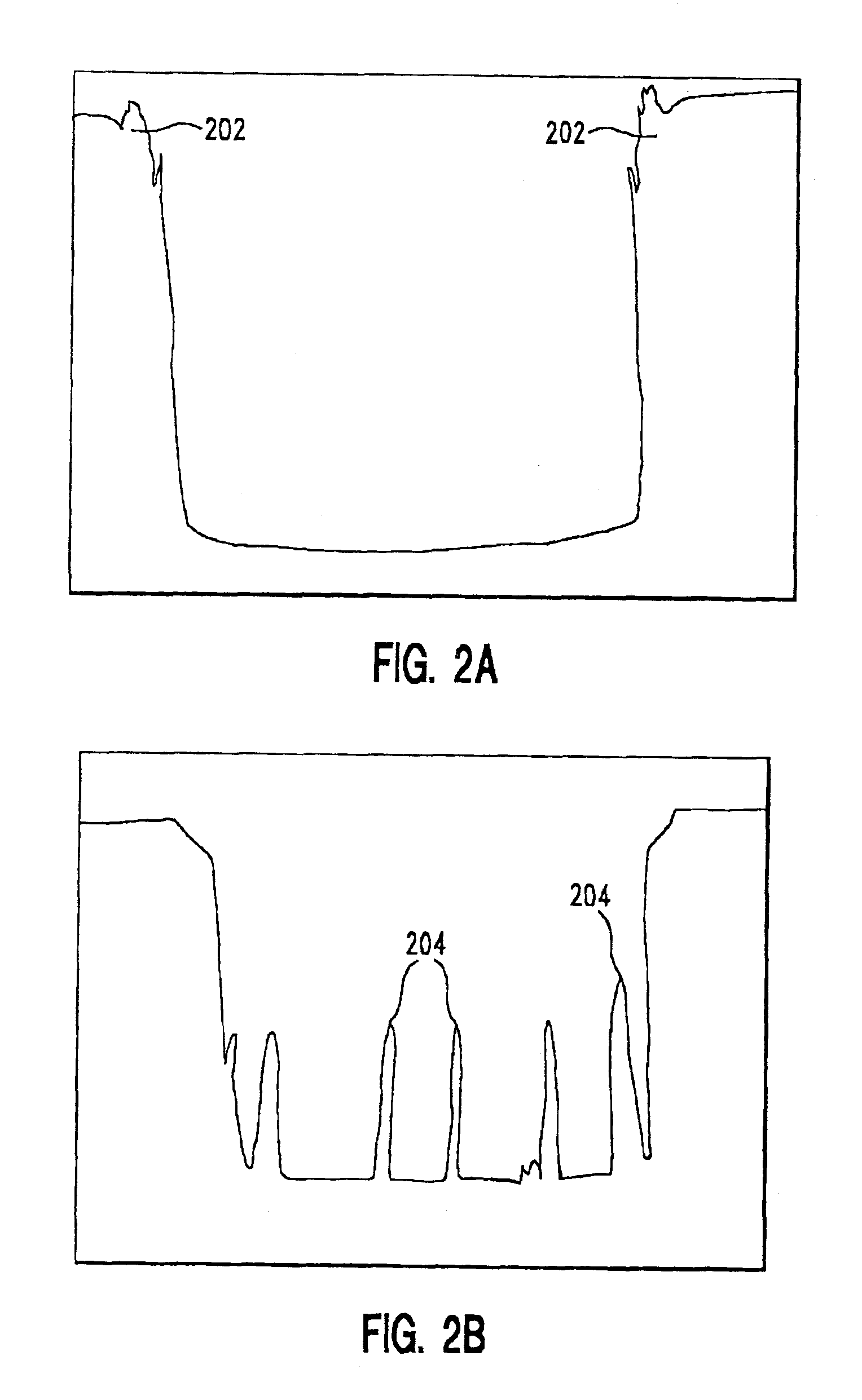Method of etching a deep trench having a tapered profile in silicon
a technology of etching and deep trenches, applied in the direction of decorative surface effects, electrical appliances, decorative arts, etc., can solve the problems of difficult task, complex devices to perform satisfactorily, and strict control of silicon etching profiles
- Summary
- Abstract
- Description
- Claims
- Application Information
AI Technical Summary
Benefits of technology
Problems solved by technology
Method used
Image
Examples
Embodiment Construction
Disclosed herein is a method of etching deep trenches in silicon which provides a tapered sidewall etch profile, where the taper angle is less than 88°, and commonly less than 85°. Exemplary processing conditions for performing various embodiments of the method of the invention are set forth below.
As a preface to the detailed description, it should be noted that, as used in this specification and the appended claims, the singular forms “a”, “an”, and “the” include plural referents, unless the context clearly dictates otherwise.
I. AN APPARATUS FOR PRACTICING THE INVENTION
The embodiment example etch processes described herein were carried out in a CENTURA® Integrated Processing System available from Applied Materials, Inc., of Santa Clara, Calif. This apparatus is described in detail below; however, it is contemplated that other apparatus known in the industry may be used to carry out the invention.
FIG. 5A shows an elevation schematic of the CENTURA® Integrated Processing System. The ...
PUM
| Property | Measurement | Unit |
|---|---|---|
| Temperature | aaaaa | aaaaa |
| Temperature | aaaaa | aaaaa |
| Length | aaaaa | aaaaa |
Abstract
Description
Claims
Application Information
 Login to View More
Login to View More - R&D
- Intellectual Property
- Life Sciences
- Materials
- Tech Scout
- Unparalleled Data Quality
- Higher Quality Content
- 60% Fewer Hallucinations
Browse by: Latest US Patents, China's latest patents, Technical Efficacy Thesaurus, Application Domain, Technology Topic, Popular Technical Reports.
© 2025 PatSnap. All rights reserved.Legal|Privacy policy|Modern Slavery Act Transparency Statement|Sitemap|About US| Contact US: help@patsnap.com



